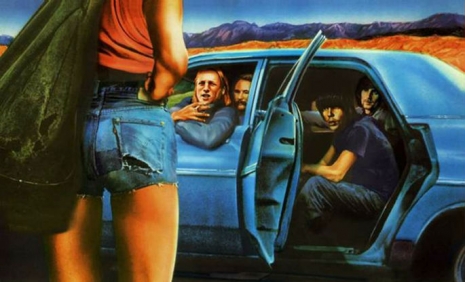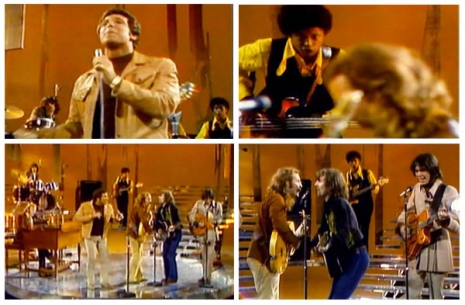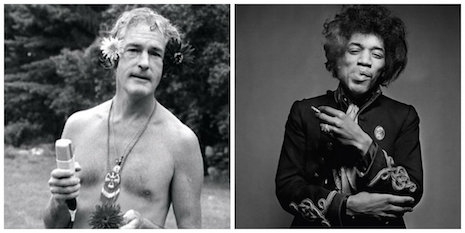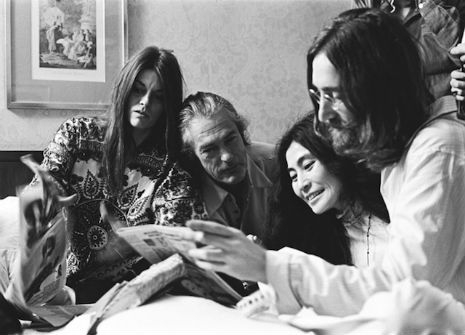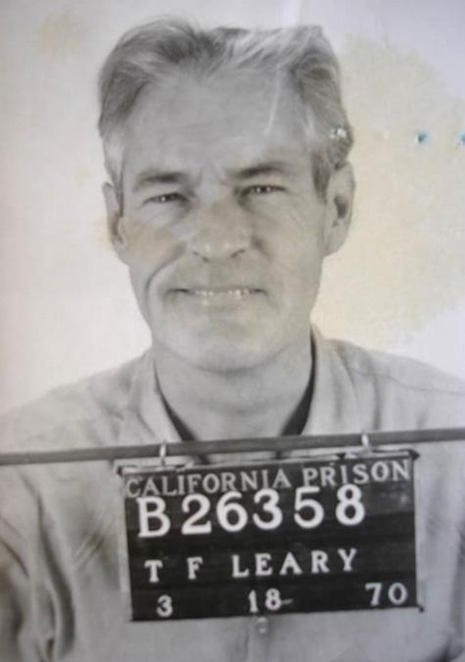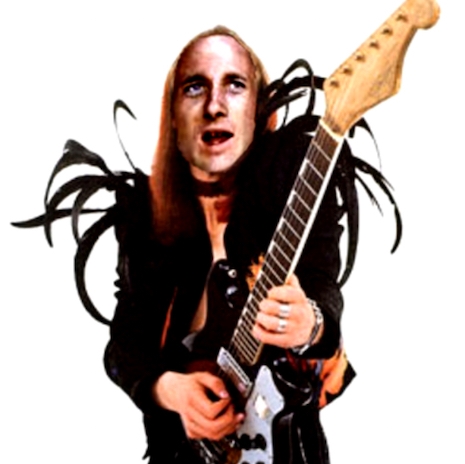
Photo: Joel Bernstein
Not only am I one of those people who gets all squirmy if a concert goes on for much longer than an hour, I tend to really hate live albums. So why did I spend six straight hours yesterday listening intently to CSNY 1974, the new 40 song live box set from Crosby, Stills, Nash and Young all the way through twice in back to back playings? Because it’s the best archival rock release of the year…
The coked-out megalomanical circus that saw David Crosby, Graham Nash, Stephen Stills and Neil Young storm across America in the first and most decadent superstar open air stadium tour of the rock era was nicknamed the “Doom Tour” by Crosby because of the feuding, the drugs and the fact that a small army of promoters and hangeroners were sucking at their hyper-megastar corporate rock teets like there was no tomorrow. There had been big rock tours in the past, but CSNY’s extra ginormous 1974 outing—dreamed up by manager Elliot Roberts and put into action by rock promoter Bill Graham—was like plotting an invasion of each new town that the show moved to. The beachheads were 50-70,000 seat football arenas, which saw stages erected and massive PA systems hooked up by a legion of roadies. Other acts on the tour included The Band, Joni Mitchell, Santana and the Beach Boys.
The “Doom Tour” grossed $11 million back when $11 million was still a hell of a lot of money, but the principals only pocketed half a mill each after expenses (and the promoters) were paid. There’s an amusing “oral history” of the trek at Rolling Stone.com. Only Young kept both feet (literally) on the ground, traveling in a bus with his son Zeke and avoiding the insanity, but suffice to say that the debauchery and rockstar egos—at least from the evidence on display here—didn’t interfere with the music, which is insanely good.
“Carry Me”
The musicianship on CSNY 1974 is first rate, better even than their earlier live album 4 Way Street as each member had creatively matured since the 1970 tour. In Stephen Stills we have one of the single most remarkable guitarists of the rock era. Don’t get me wrong, Neil Young is no slouch on the six-string himself, but with Stills—as opposed to with Crazy Horse—his ragged, idiosyncratic playing is obliged to conform to, fight against and to parry with Stills’ more structured and almost architectural guitar style. Musically at least, they bring out the best in each other, but it’s Stills who provides the foundation in CSNY that Young reacts to and then he in turn reacts to what Young does, and lemme tell ya, it’s breathtaking. If, like some people, you approach CSNY solely from the POV of Young’s perhaps more “aloof” contributions, these are some canonical performances by him here that I think any Neil Young freak would go absolutely nuts over. (Five of the songs in the set composed by Young—“Traces,” “Goodbye Dick,” “Love Art Blues,” “Hawaiian Sunrise” and “Pushed It Over the End” –appear on CSNY 1974 for the first time on any official release.)
For all the talk of the backstage feuds, there is simply no sign of this in the onstage camaraderie documented here, which is supportive, fraternal and joyously ecstatic. A good example of this comes with Stills’ delicate piano backing of Young on “Only Love Can Break Your Heart.” Other highlights of the set include several “solo” numbers: a simply smouldering take on Young’s “On The Beach,” a gorgeous rendition of Crosby’s confessional “Carry Me” (at that point still un-issued on record), Nash’s “Grave Concern” from his dark, nearly unknown Wild Tales solo LP and Stills’ motherfucker of a rip, spitting his way through a frantic “Word Game.”
There are various configurations of CSNY 1974 on vinyl, CDs, DVD and Blu-ray Pure Audio discs. Unless you have to have vinyl (and are a masochist who loves flipping six records over) I’d highly suggest going with the version that Rhino sent me, the Blu-ray, which has all 40 songs—there were three sets, two rock sets with an acoustic set in between—on one disc so you can just relax and take it all in for three hours. Another reason to opt for the Blu-ray set is that it sounds really, really good. Produced by Graham Nash and the group’s longtime archivist, Joel Bernstein, the set was culled from the tapes of nine shows that were recorded by Elliot Mazer, the tour’s audio engineer and others. The audio quality here is astonishingly good for 40-year-old live recordings to begin with, but it would be remarkable sounding if it was recorded yesterday. The acoustic guitars chime, the electric leads cut through you like a knife, Stills and Young’s duelling guitars complement and argue with each other. You’ve got the heavenly harmonies of Crosby and Nash mic’d so closely that you can hear their breath. The piano has presence and clarity as if it had been recorded in a studio and not at an open air sports arena in front of 50,000 screaming fans. You get the idea. At least when all of that money was flying out the door unaccounted for, they got these great recordings out of it. The mastering was done by Bernie Grundman (an audiophile mark of distinction) after it was mixed down by Nash, Bernstein and Stanley Tajima Johnston in 192-kHz/24-bit resolution. [To anyone who says that stuff doesn’t make a difference, I defy you to listen to the acoustic set on Blu-ray and tell me you’ve heard a more “intimate” sounding live recording, ever. I suspect that Nash and Bernstein presented their work to Stills and the notoriously picky audiophile Young with confidence. What else would there be for Neil Young to say other than “Hey, great job, guys!”?]
“Grave Concern”
To my mind CSNY 1974 is the “classic rock” release of the year so far. It’s so damned good that I can’t imagine anything coming along and topping it, either, but if that did occur, then 2014 will be a good year for rock snobs, overflowing with an embarrassment of riches like this and the Led Zeppelin remasters.
Like the majority of Amazon reviewers, Ima gonna give CSNY 1974 five stars. One woman writes that she bought it for her husband and gave it to him before they were going to go out and eat. They opted instead to stay home and listen to it all the way through. That was my reaction to it, too. I expected to like it, but I liked it so much that I spent six hours straight with it. Not listening while surfing on my iPad, but listening to it. Listening intently and digging the shit out of it. In summation: CSNY 1974 is fucking good. You want a box set to feel like a good value and Christmas day simultaneously and this one truly does.
(Did I mention that there’s a separate DVD of video performances shot at Wembley Stadium and at Landover, MD’s Capital Centre? That’s awesome, too.)
Here’s something fascinating, a black and white video recording of an impromptu CSNY set taped at Winterland in 1973. It was originally a Stephen Stills and Manassas concert, then some “very special guests” showed up. At the time Neil Young was on his Tonight’s the Night tour with the Santa Monica Flyers and Crosby & Nash were touring as a duo. It’s sloppy, sure, the four hadn’t played together in over two years at this point, but it’s history, baby! Neil Young, perhaps emphasizing his independence from the other three, doesn’t come onstage until the fifth number:
Posted by Richard Metzger
|
07.18.2014
10:51 pm
|
